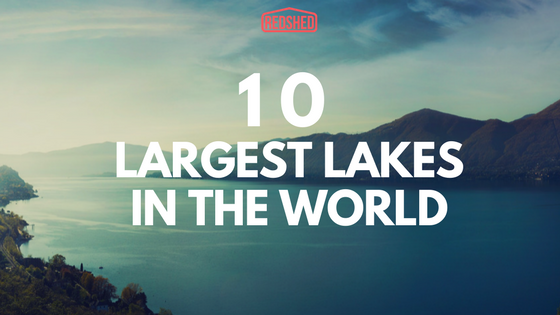In case you forgot (because I almost did), lakes are bodies of water that are surrounded by land. Unlike oceans and seas, lakes are still, meaning they don’t move. Lakes aren’t permanent, they may appear suddenly, and they can disappear over time. Some lakes can either have fresh water or salt water, while seas naturally contain salt water. Tectonic, volcanic, and glacial activities are some of the reasons why lakes were naturally formed. That’s why it comes to no surprise why North America has one of the world’s greatest lakes, as the region was covered in glaciers during the ice age, about 18, 000 years ago. As the glaciers move constantly, the massive ice was able to create great pits which serve as a basin for water that came from the melted ice.
Aside from the natural ways that formed lakes, human activities have also been able to create these bodies of water. Even animals, like beavers, have also constructed dams across the rivers using timber. No matter how the millions of lakes around the world came to exist, all of them serve an essential role in our ecosystem. And while there are a lot of interesting lakes out there, here are the ten largest lakes on Earth. Most of them are freshwater lakes, while some are saline and they can even be saltier than the ocean.
10 Largest Lakes In The World
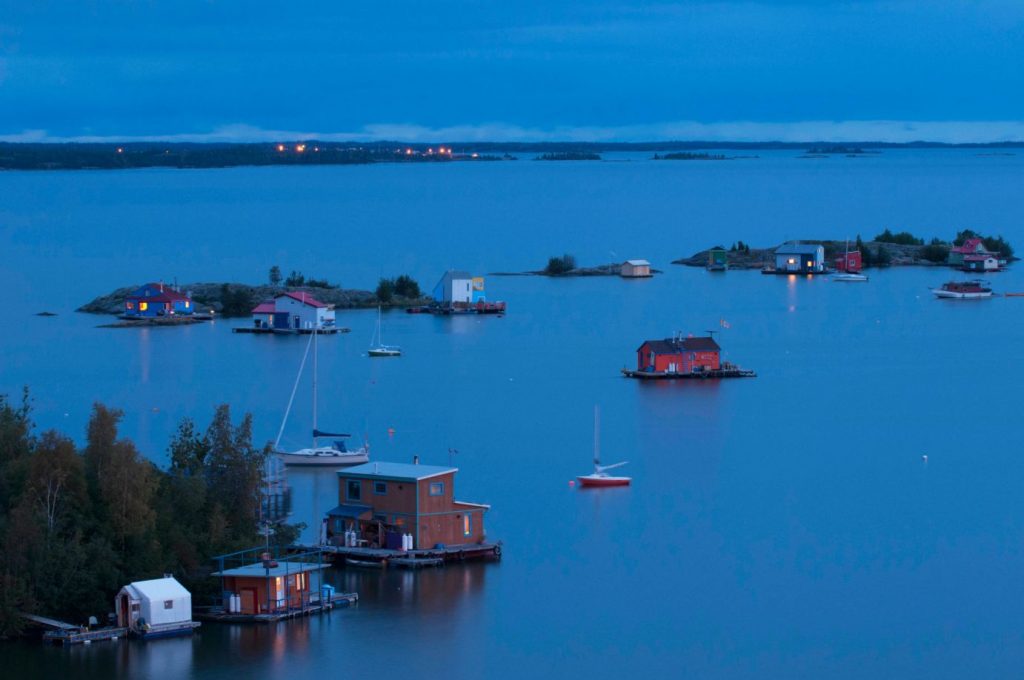
10. Great Slave Lake – 28,930 km²
Although the Great Slave Lake is the last on this list, it’s the deepest lake in North America with 614 meters (2,014 ft) in depth. It has a total area of about 28,930 square kilometres (11,030 mi), and it’s located in the Northwest Territories. It’s also the 2nd largest lake in the Northwest Territories of Canada as it measures around 500 km (300 mi) long and 50 to 225 km (30 to 140 mi) wide. The lake’s name was named after the “Slavey” Indians which is the term that refers to the major group of Dene people that are indigenous to this region.
The Hay River is the primary inflow of the lake, and the main outflow is drained by the Mackenzie River. The Great Slave Lake has a frozen surface mostly throughout the year because of its location, and it’s only ice-free for four months. However, during winter, it’s usually used as an ice highway to the territorial capital Yellowknife.
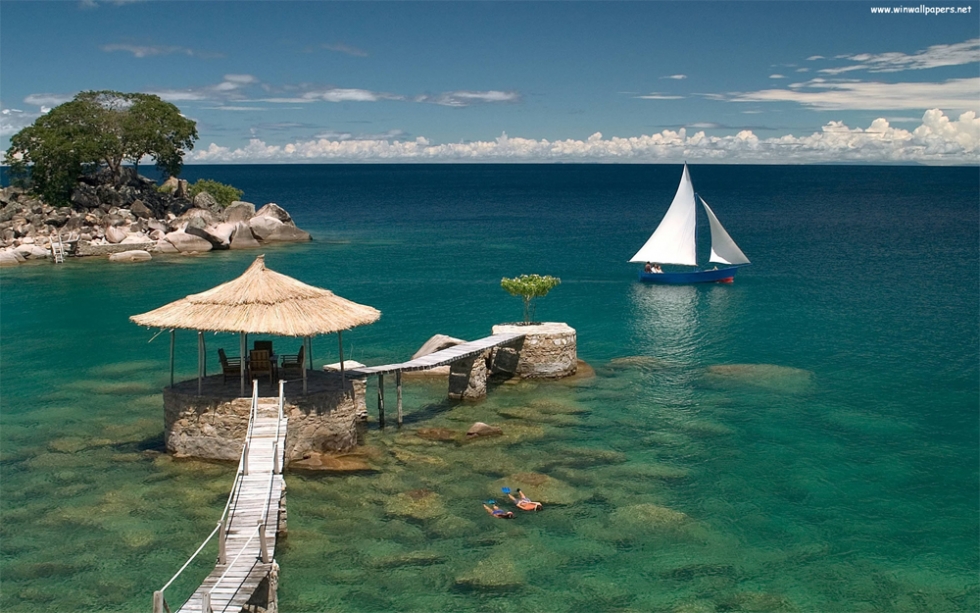
9. Lake Malawi – 30,044 km²
Lake Malawi otherwise known as Lake Nyassa in Tanzania, and Lago Niassa in Mozambique, is indeed a remarkable body of water. This freshwater lake has a total surface area of 30,044 square kilometres (11,600 mi) and has a depth of 706m (2,316 ft). It’s the third largest lake in Africa, and it comes as the second deepest in this country as well. The lake has shorelines located on western Mozambique, eastern Malawi, and southern Tanzania, and it is the home to a lot of fishes with almost 1,000 species. This makes it one of the lakes with the highest number of fish species in the world.
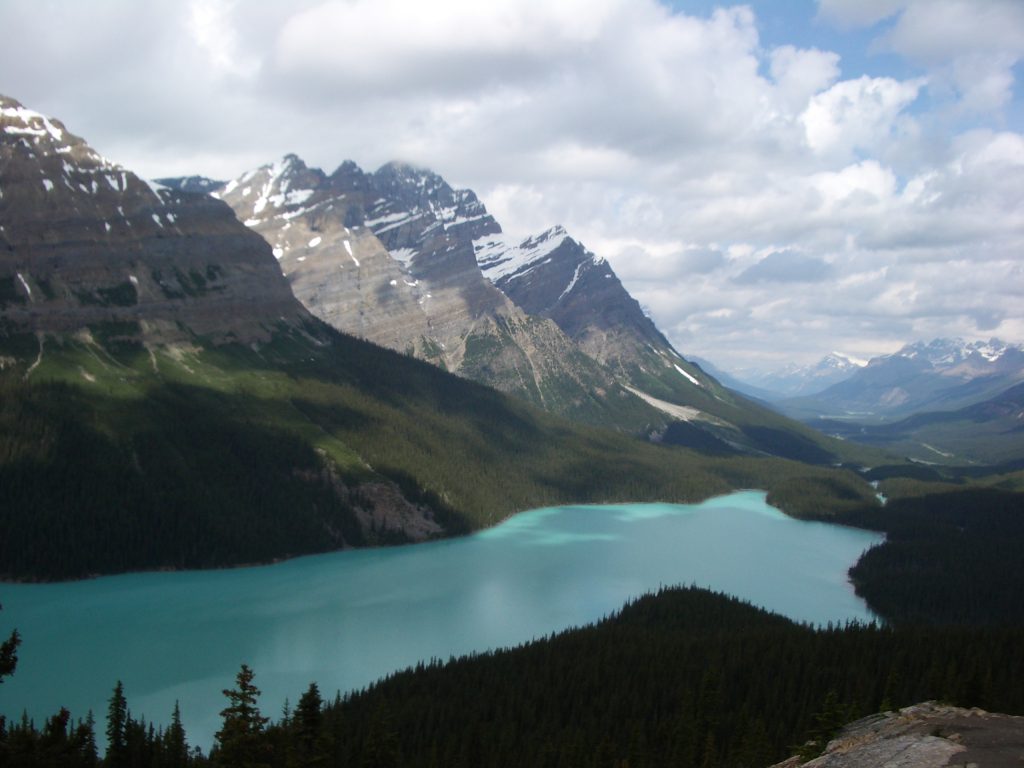
8. Great Bear Lake – 31,080 km²
With a total surface area of 31,080 square kilometers, the Great Bear Lake isn’t just the eighth largest lake in the world, but it’s also the fourth largest in North America, and the largest lake in Canada. Its name was derived from the word Satudene which means “grizzly bear water people” in Denesuline. The lake is 320 km long, and up to 175 km wide. Great Bear Lake is made up of five separate arms, with each named as Dease (northeast), McTavish (southeast), McVicar (south), Keith (southwest) and Smith (northwest).
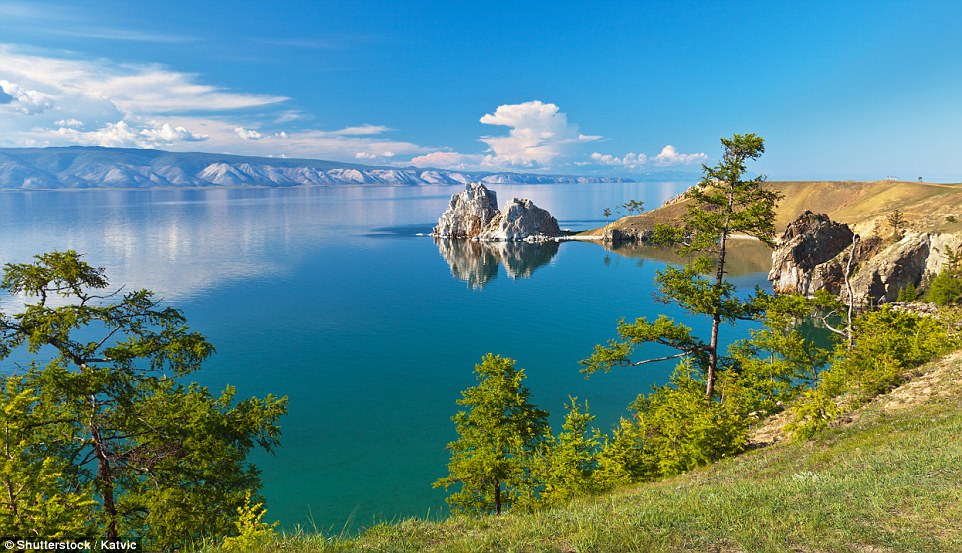
7. Lake Baikal – 31,500 km²
Lake Baikal is said to be the oldest existing freshwater lake on Earth as it’s already around for about 25 million years. It’s located in the southeast part of Siberia, and it’s the deepest lake in the world with a depth of 1,700m (5,500 ft). Aside from this, Lake Baikal is also the largest unfrozen water lake in the world, and it contains 20% of the Earth’s total fresh water. Lake Baikal has a total surface area of 31,500 square kilometres, and it’s considered as “Nature’s Lake” because it was formed due to the movements within a tectonic rift zone. This lake is known as the ‘Galapagos of Russia’ because its old existence and isolation from the people have produced one of the world’s most diverse and unusual freshwater faunas. Lake Baikal is also considered as one of the world’s clearest lakes.
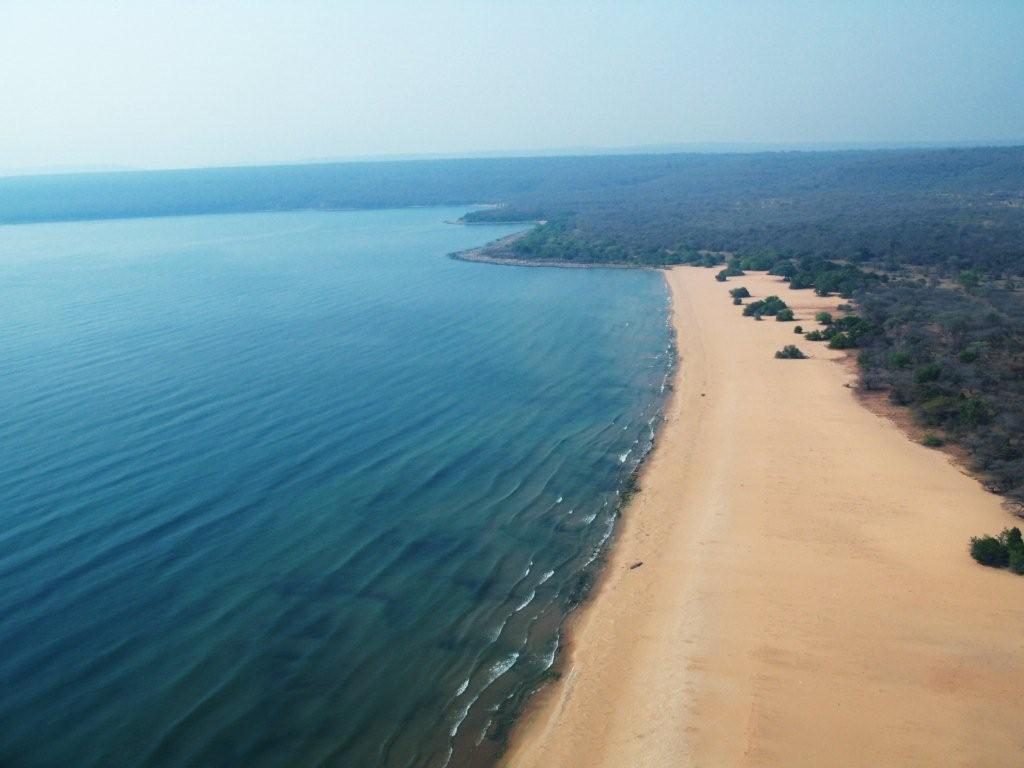
6. Lake Tanganyika – 32,893 km²
Aside from being the 6th largest lake in the world, Lake Tanganyika in Central Africa is the world’s longest freshwater lake with a north to south distance of 677 kilometres (420 mi). It is also the second deepest lake in the world after Lake Baikal with a depth of 1,433m (4,700 ft). The immense depth is resulted by the fact that it lies in the Great Rift Valley, which is responsible for its steep shoreline. Similar to other large lakes, Lake Tanganyika was naturally formed because of tectonic movements. It’s considered as one of the richest freshwater ecosystems in the world with more than two thousand plant and animal species. The water from Lake Tanganyika flows into the Congo River system and eventually into the Atlantic Ocean.
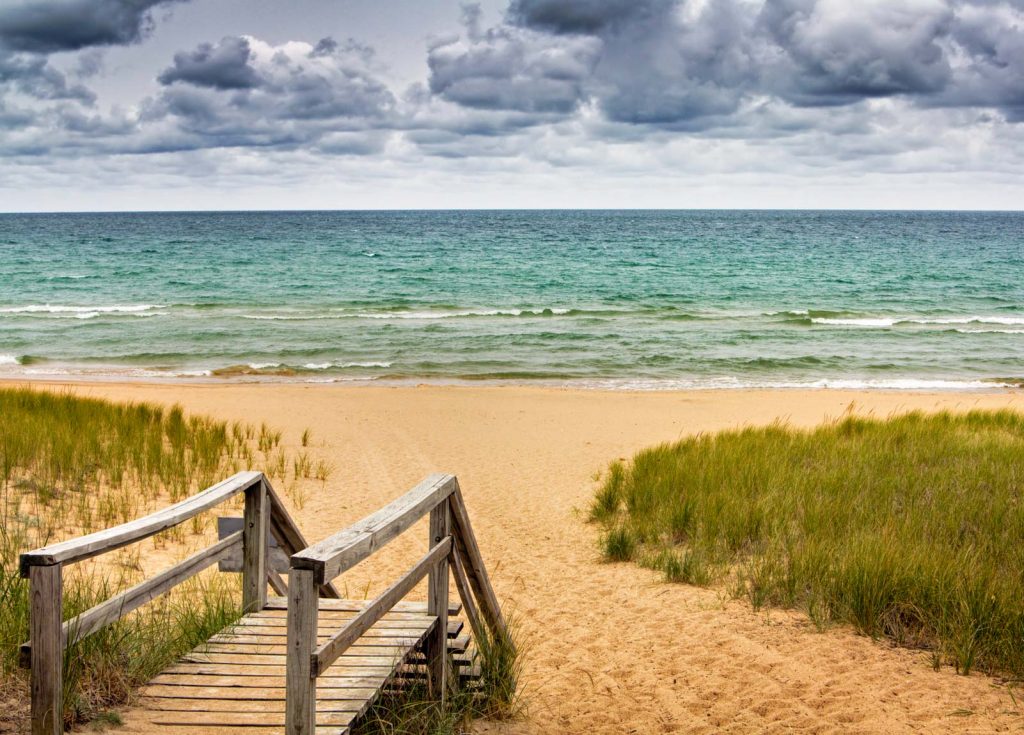
5. Lake Michigan – 58,016 km²
Lake Michigan is one North America’s Great Lakes. However, it’s the only one that’s entirely sheltered by the United States. This lake is the largest lake that’s found within a single country as the other four Great Lakes extend from the U.S. to Canada. It’s share by the U.S states of Wisconsin, Illinois, Indiana, and Michigan. The word “Michigan” is believed to be derived from the Ojibwa (Chippewa) word michi-gami which means “large lake.” Of the Great Lakes, this one falls 3rd as the largest by surface area with 58,016 km². While it’s the 2nd largest when it comes to volume with around 4,918 cubic km of water. Approximately 12 million people are currently living along the shores of Lake Michigan.
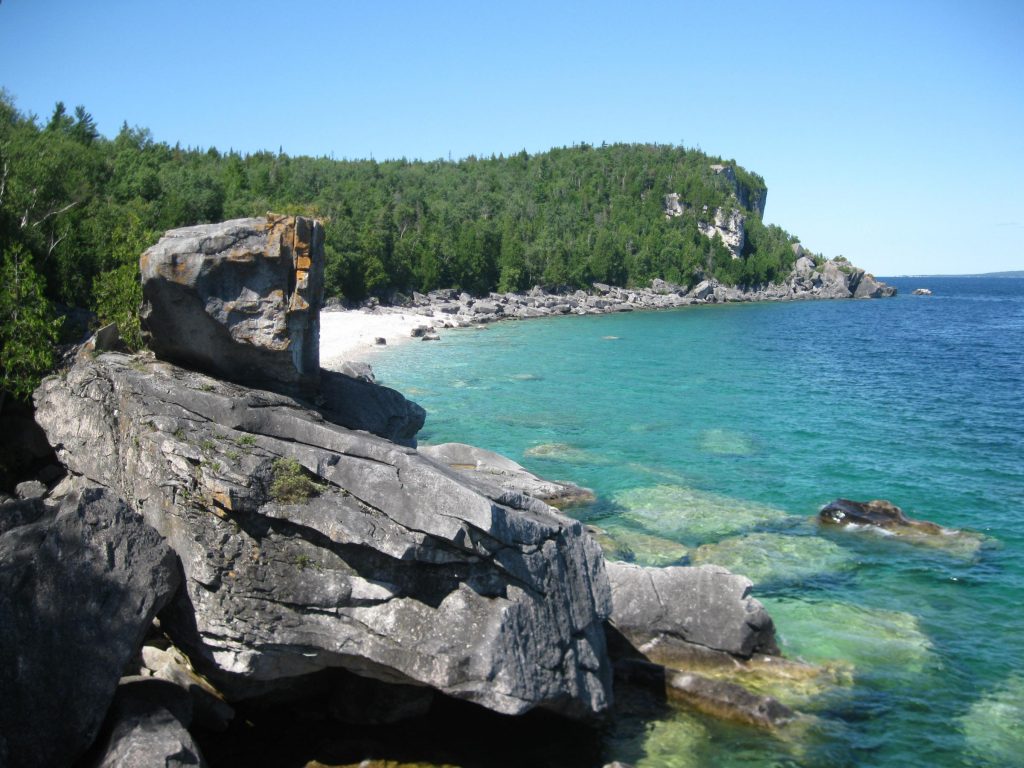
4. Lake Huron – 59,596 km²
Just like Lake Michigan, Lake Huron is among the five Great Lakes of North America, and it has the longest shoreline of all which measures 6,157 km (3,827 mi). With a total surface area of 59,596 square kilometres and a volume of 3,540 cubic km, Lake Huron is the fourth largest lake in the whole world. This lake is bounded by Michigan, the USA on the west and Ontario, Canada on the north and east. Lake Huron has 30,000 islands, with Manitoulin Island being the post popular. It’s located in the Georgian Bat, and more than 12,000 people are residing on this island. Manitoulin is the world’s largest freshwater island, and there are even more than 100 freshwater lakes in the island itself.
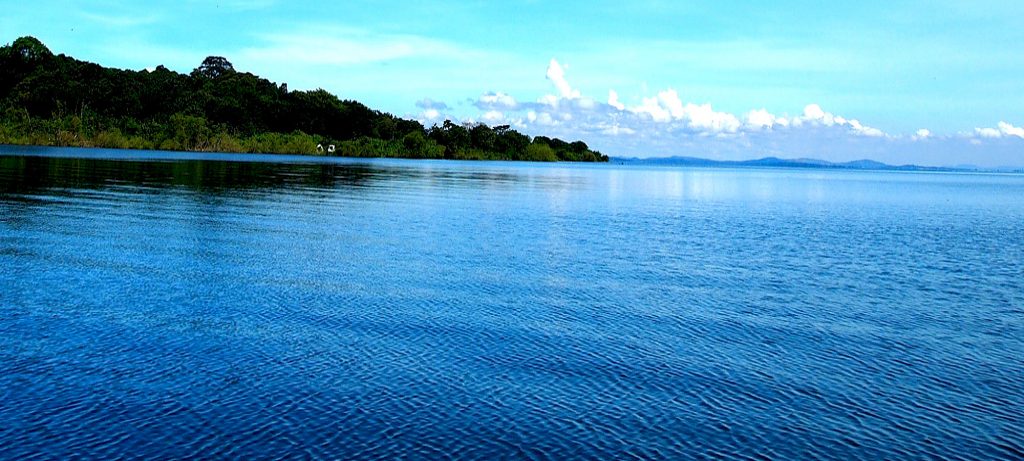
3. Lake Victoria – 69,485 km²
Lake Victoria, also known as Victoria Nyanza, is the largest lake in Africa. It’s the second largest freshwater lake in the world with Lake Superior being the world’s largest. The lake’s named after Queen Victoria of United Kingdom by a Briton named John Hanning Speke, who was the first to document it. The Kagera River is the largest river flowing into this lake, and it’s drained solely by the Nile River. It is said that Lake Victoria has completely dried up for at least three times already with the last occurring about 17,300 years ago, then it refilled around 14,700 years ago. This may be the reason why the lake is relatively shallow, with an average depth of just 40 m and a maximum depth of 84 m.
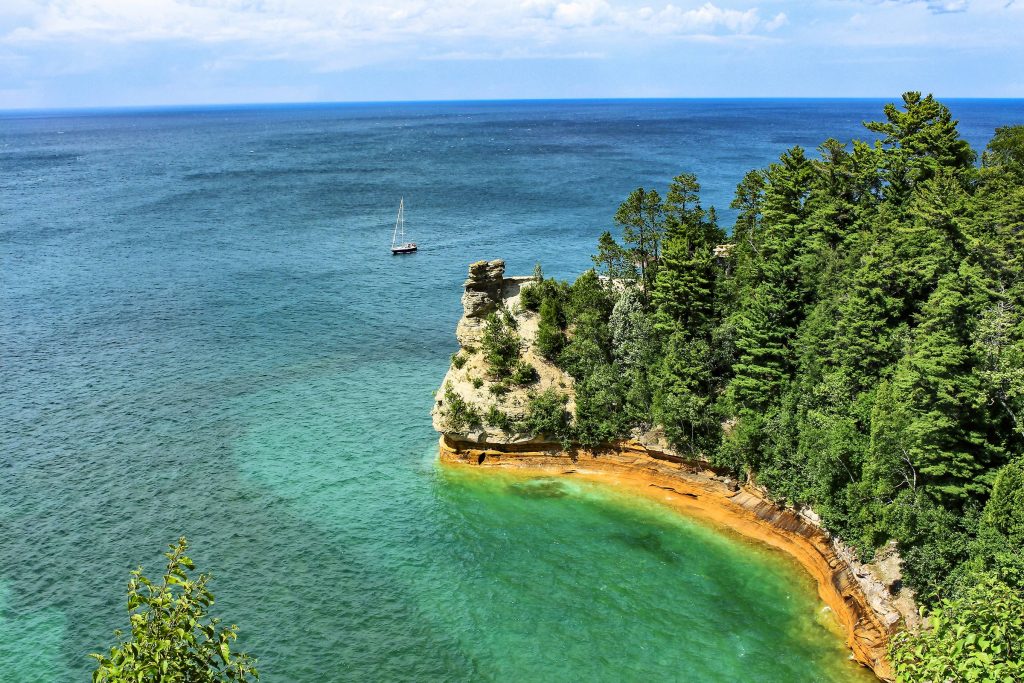
2. Lake Superior – 82,414 km²
As mentioned, Lake Superior is the largest freshwater lake in the whole world. With a total surface area of 82,414 square kilometres, it’s the second largest lake in the whole world and the largest amongst the Great Lakes of North America. The lake is shared by Ontario, Canada to the north, Minnesota, U.S.A to the west, and Wisconsin and the Upper Peninsula of Michigan to the south. Lake Superior flows into Lake Huron via the St. Marys River and the Soo Locks. This lake contains 10% of the world’s fresh surface water and it’s the deepest point is about 400 metres (1,400 ft).
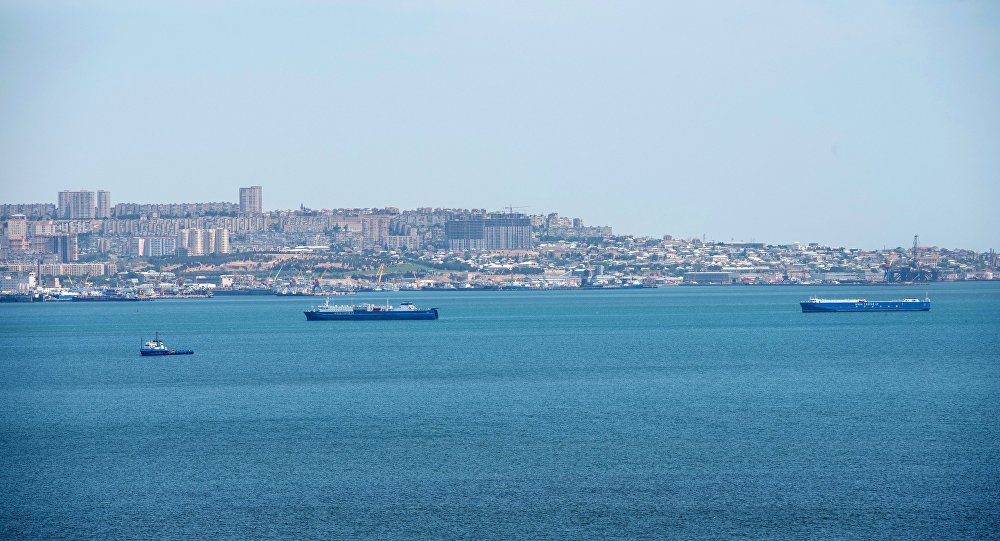
1. Caspian Sea – 371,000 km²
Now don’t get confused. The world’s largest lake is referred to as a “sea” because of its massive size and saline water. The Caspian Sea is a landlocked endorheic, meaning it’s has no natural outflows. It’s the largest enclosed inland water body in the world with a total surface area of 371,000 square kilometres. This lake holds 78,200 cubic km of water by volume, and that’s about 3.5 times more water by volume than all of the five Great Lakes merged! It’s also the third deepest lakes in the world with a maximum depth of 1,025 metres (3,300 ft). The Caspian Sea is bounded by the countries Kazakhstan, Russia, Azerbaijan, Iran, and Turkmenistan.
The World’s 30 Largest Lakes by Land Area
| Rank | Lake | Location | Area (km²) |
|---|---|---|---|
| 1 | Caspian Sea | Azerbaijan, Iran, Kazakhstan, Russia, Turkmenistan | 371,000 |
| 2 | Superior | Canada, United States | 82,414 |
| 3 | Victoria | Kenya, Tanzania, Uganda | 69,485 |
| 4 | Huron | Canada, United States | 59,596 |
| 5 | Michigan | United States | 58,016 |
| 6 | Tanganyika | Burundi, Democratic Republic of the Congo, Tanzania, Zambia | 32,893 |
| 7 | Baikal | Russia | 31,500 |
| 8 | Great Bear Lake | Canada | 31,080 |
| 9 | Malawi | Malawi, Mozambique, Tanzania | 30,044 |
| 10 | Great Slave Lake | Canada | 28,930 |
| 11 | Erie | Canada, United States | 25,744 |
| 12 | Winnipeg | Canada | 24,514 |
| 13 | Ladoga | Russia | 17,700 |
| 14 | Ontario | Canada, United States | 18,960 |
| 15 | Balkhash | Kazakhstan | 16,996 |
| 16 | Vostok | Antarctica | 15,690 |
| 17 | Onega | Russia | 9,700 |
| 18 | Titicaca | Bolivia, Peru | 8,372 |
| 19 | Nicaragua | Nicaragua | 8,264 |
| 20 | Athabasca | Canada | 7,850 |
| 21 | Turkana | Ethiopia, Kenya | 6,405 |
| 22 | Reindeer Lake | Canada | 6,500 |
| 23 | Issyk-Kul | Kyrgyzstan | 6,236 |
| 24 | Urmia | Iran | 5,200 |
| 25 | Vanern | Sweden | 5,650 |
| 26 | Winnipegosis | Canada | 5,370 |
| 27 | Albert | Democratic Republic of the Congo, Uganda | 5,299 |
| 28 | Mweru | Democratic Republic of the Congo, Zambia | 5,120 |
| 29 | Nettilling | Canada | 5,066 |
| 30 | Sarygamysh | Turkmenistan, Uzebkistan | 5,000 |
